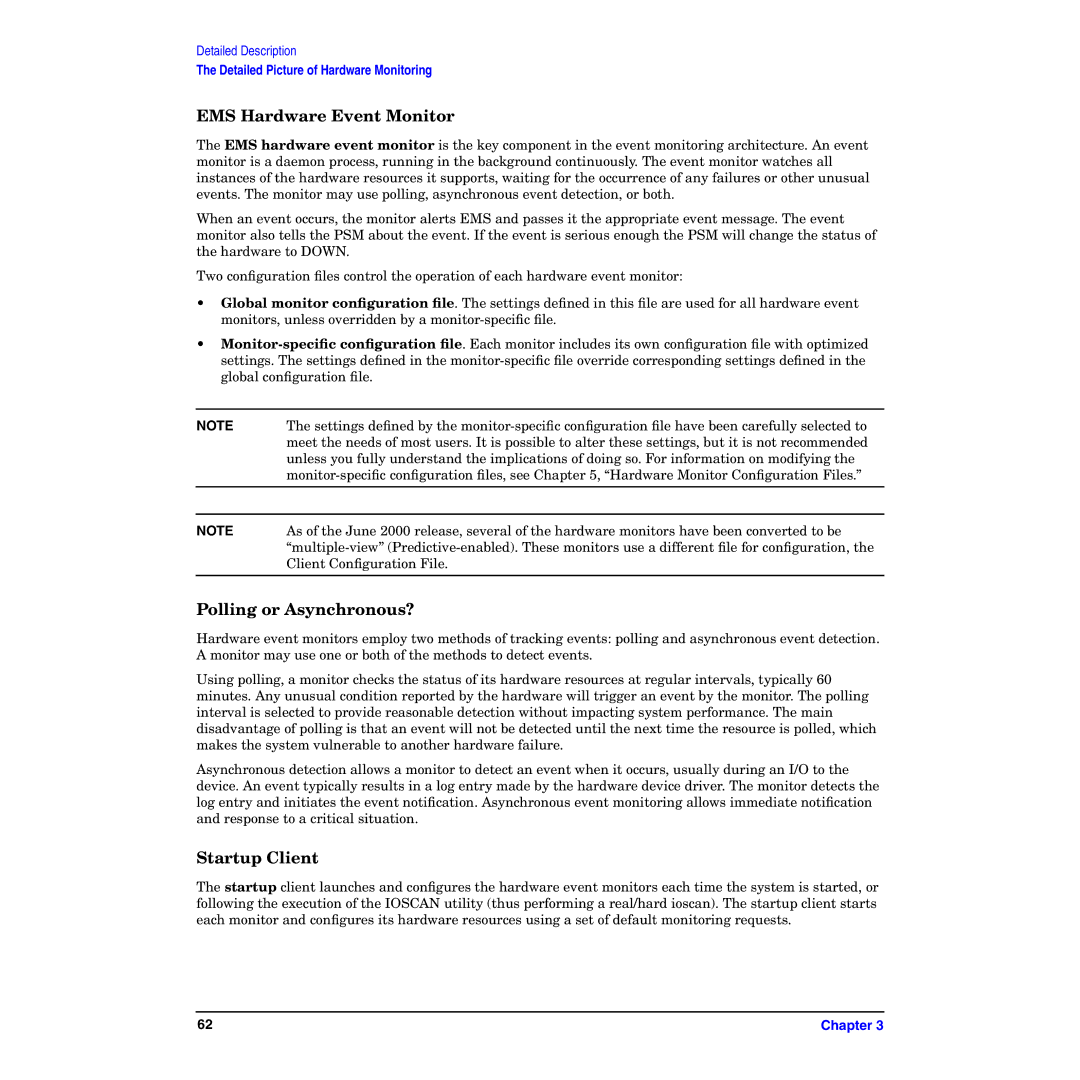
Detailed Description
The Detailed Picture of Hardware Monitoring
EMS Hardware Event Monitor
The EMS hardware event monitor is the key component in the event monitoring architecture. An event monitor is a daemon process, running in the background continuously. The event monitor watches all instances of the hardware resources it supports, waiting for the occurrence of any failures or other unusual events. The monitor may use polling, asynchronous event detection, or both.
When an event occurs, the monitor alerts EMS and passes it the appropriate event message. The event monitor also tells the PSM about the event. If the event is serious enough the PSM will change the status of the hardware to DOWN.
Two configuration files control the operation of each hardware event monitor:
•Global monitor configuration file. The settings defined in this file are used for all hardware event monitors, unless overridden by a
•
NOTE | The settings defined by the |
| meet the needs of most users. It is possible to alter these settings, but it is not recommended |
| unless you fully understand the implications of doing so. For information on modifying the |
| |
|
|
|
|
NOTE | As of the June 2000 release, several of the hardware monitors have been converted to be |
| |
| Client Configuration File. |
|
|
Polling or Asynchronous?
Hardware event monitors employ two methods of tracking events: polling and asynchronous event detection. A monitor may use one or both of the methods to detect events.
Using polling, a monitor checks the status of its hardware resources at regular intervals, typically 60 minutes. Any unusual condition reported by the hardware will trigger an event by the monitor. The polling interval is selected to provide reasonable detection without impacting system performance. The main disadvantage of polling is that an event will not be detected until the next time the resource is polled, which makes the system vulnerable to another hardware failure.
Asynchronous detection allows a monitor to detect an event when it occurs, usually during an I/O to the device. An event typically results in a log entry made by the hardware device driver. The monitor detects the log entry and initiates the event notification. Asynchronous event monitoring allows immediate notification and response to a critical situation.
Startup Client
The startup client launches and configures the hardware event monitors each time the system is started, or following the execution of the IOSCAN utility (thus performing a real/hard ioscan). The startup client starts each monitor and configures its hardware resources using a set of default monitoring requests.
62 | Chapter 3 |
